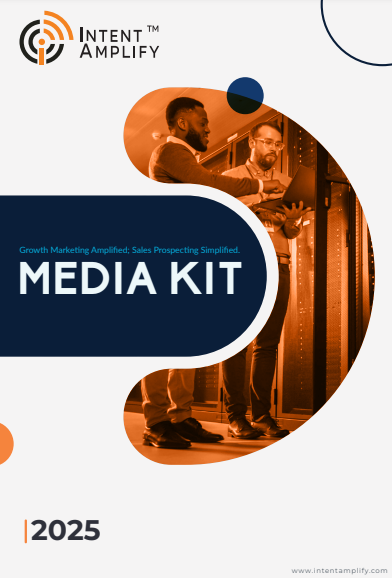
How ABM Drives Predictable B2B Revenue Growth in 2025
- Last updated on: June 30, 2025
You’ve probably heard the term ABM tossed around in strategy meetings, tech webinars, or sales briefings. But in 2025, Account-Based Marketing isn’t just a thing anymore – it’s how high-performing B2B teams build predictable revenue, quarter after quarter.
Let’s be honest – traditional lead gen doesn’t cut it in today’s B2B environment. Spray-and-pray campaigns? High volume, low value. ABM flips that script. It focuses your energy on accounts that move the needle. The accounts that matter.
And in a year where efficiency, data precision, and personalization are more than expectations, they’re requirements – ABM doesn’t just work. It performs.
Think Fewer Accounts. More Results.
Imagine walking into a networking event. Would you try to talk to everyone in the room, or would you focus on the three people who are actively looking for what you offer?
That’s ABM. It’s not about shouting louder, it’s about knowing exactly who to speak to, what to say, and when to say it.
According to sources, 81% of companies running ABM say it delivers a better ROI than any other marketing approach. And nearly 90% of B2B marketers are now actively using it.
Because when you spend time on accounts that are more likely to convert, your results don’t just improv,e they become predictable.
Why Predictability Matters (Now More Than Ever)
Here’s something sales and marketing can finally agree on: guesswork is out. Revenue teams want clear numbers, consistent performance, and realistic forecasts. ABM delivers on that promise.
A Forrester-backed study found that companies aligning sales and marketing around ABM saw up to 48% year-over-year revenue growth. Why? Because they weren’t working in silos anymore. They were working together on the same accounts, with the same goals and the same timelines.
When your go-to-market teams agree on what “good” looks like, you stop spinning wheels. You start gaining ground.
AI: The Smart Engine Behind Modern ABM
Here’s where 2025 feels like… well, the future.
Artificial Intelligence isn’t a nice-to-have in ABM anymore. It’s the motor that powers targeting, timing, and touchpoints.
Platforms like 6sense, Demandbase, and Mutiny now help teams:
- Spot in-market accounts earlier
- Score leads more accurately
- Personalize messaging across channels
- Route the right rep to the right contact at the right time
And it’s not just theory. Snowflake used AI to fine-tune its ABM campaigns. They doubled their meeting bookings and increased click-through rates by over 50%. That’s not a minor bump. That’s a growth lever.
Not every team has a data science squad. But in 2025, most ABM tools will come AI-ready, giving your campaigns the edge without adding complexity.
Real Story. Real Impact.
Let’s break from theory for a second.
A mid-size cybersecurity vendor we spoke with had been running traditional email campaigns – tons of them. Their database was massive, but conversions? Not so much.
Then they switched to ABM.
Instead of emailing thousands, they focused on just 50 accounts. Each message was tailored to that company’s biggest risk. They aligned their marketing team with sales reps who had context. Within three months, their close rate tripled. Pipeline velocity increased. And marketing was finally seen as a revenue partner, not a cost center.
ABM didn’t just deliver – it redefined how their teams operated.
Four Things That Make ABM Deliver Predictable Growth
- You choose the right accounts, not just the right personas.
Instead of hoping the right buyer finds you, you go to them. You prioritize the companies most likely to buy and have the highest lifetime value. - Sales and marketing work together. Finally.
No more finger-pointing. When both teams build campaigns, share KPIs, and collaborate on follow-ups, you see tighter funnels and faster closes. - AI keeps things smart and scalable.
You don’t have to reinvent personalization every time. Let your tech stack work behind the scenes identifying who’s ready when they’re warming up, and what messaging will land best. - It’s built to learn.
ABM isn’t “set it and forget it.” It’s designed for continuous feedback. If something doesn’t click, the data tells you. And next time, you do better.
This is how ABM moves from a marketing experiment to a reliable revenue engine.
Yes, ABM Is Personal and That’s the Point
One VP told us something that stuck:
“Our best ABM campaign didn’t look like a campaign. It felt like a conversation that had already started before the email even hit their inbox.”
In a world of AI, automation, and endless content, relevance still wins. Buyers want to feel understood. ABM makes that possible at scale.
It doesn’t mean being creepy or overly familiar. It means showing that you’ve done your homework. That you’re not here to pitch. You’re here to help.
Why CMOs and CROs Love It (And Boards Do Too)
When marketing can tell the CFO, “Here are the 100 accounts we’re targeting, and here’s the forecasted revenue from them,” the conversation changes.
You’re not reporting on clicks and impressions. You’re reporting on influence and closed deals.
That’s why ABM is sticking. It brings structure, clarity, and yes, predictability to a landscape that used to feel like a guessing game.
What to Take Away from This
If you’re planning your next quarter or your next fiscal year keep this in mind:
- ABM focuses your energy where it counts: high-value accounts.
- It aligns sales and marketing around common goals.
- AI makes it faster, smarter, and scalable.
- And when executed well, ABM doesn’t just grow the pipeline – it turns that pipeline into forecastable revenue.
Predictable growth in B2B isn’t just possible. With ABM, it’s happening now.
FAQs
- What exactly is ABM?
ABM stands for Account-Based Marketing. It’s a strategy where sales and marketing target specific companies (not just individuals) with tailored messaging and outreach. - In what ways does account-based marketing set itself apart from conventional lead-gathering methods?
ABM shifts the emphasis from generalized outreach to nurturing relationships with accounts that offer the highest growth potential. It’s more personalized, more aligned with sales, and typically more efficient. - Does ABM require expensive tools?
Not necessarily. While many teams use AI-powered platforms like 6sense or Demandbase, you can start small just focus on aligning teams and crafting tailored campaigns. - When can a business realistically expect to notice outcomes from account-based marketing efforts?
Some companies see results in 3 – 6 months, especially if targeting warm or existing accounts. Others see long-term growth over a year. - Can ABM work for smaller businesses?
Absolutely. It can be even more powerful for smaller teams that need to be selective with their time and budget.




